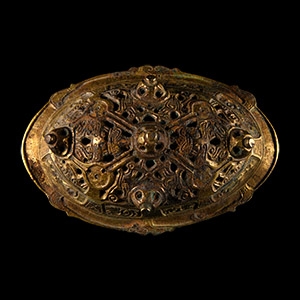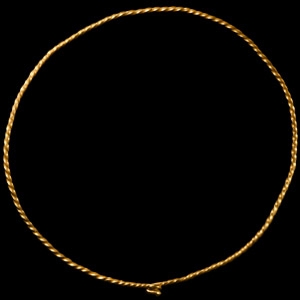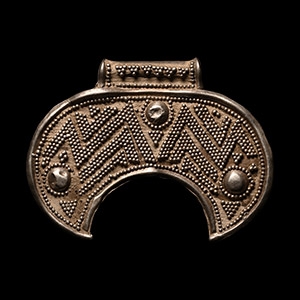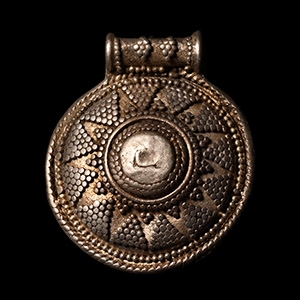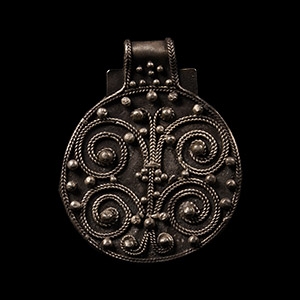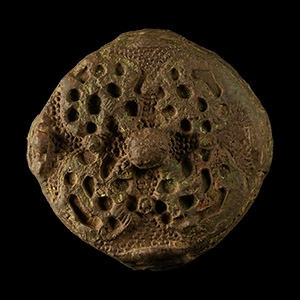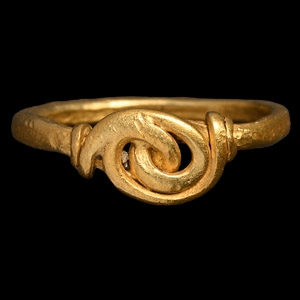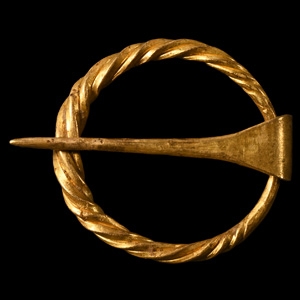Home > Auctions > 23 - 27 May 2023
Ancient Art, Antiquities, Natural History & Coins
Auction Highlights:
European collection, acquired 1980s.
Ex property of a UK collector.
This lot has been checked against the Interpol Database of stolen works of art and is accompanied by search certificate no. 200319.
Cf. MacGregor, A. et al., A Summary Catalogue of the Continental Archaeological Collections, Oxford, 1997, item 1.1.
The Oseberg style shows a strong interplay between zoomorphic and geometric patterns that continues artistic traditions predating the Viking Age, but continued in the Viking Age at least until 875 A.D. While 8th century art and ornaments show considerable variation across Scandinavia, the gripping-beast motif was adopted in every region within a few decades after 790 A.D.
From the collection of a North American gentleman, formed in the 1990s.
This lot has been checked against the Interpol Database of stolen works of art and is accompanied by search certificate no.200460.
Cf. MacGregor, A. et al., A Summary Catalogue of the Continental Archaeological Collections, Oxford, 1997, item 4.7; Portable Antiquities Scheme Database, record id. LON-F2F201, for a very similar 10th century example.
From the collection of a North American gentleman, formed in the 1990s.
This lot has been checked against the Interpol Database of stolen works of art and is accompanied by search certificate no.200432.
Cf. Romisch-Germanischen Zentralmuseum Mainz (RGZM), Das Reich der Salier, 1024-1125, Sigmaringen, 1992, pp.168ff., fig.7, Vitrine 6.
During the Salian period, large treasures of silver coins, bars and jewellery were buried in the West Slavic settlement areas, east of the borders of the empire. This torc corresponds with a Slavic neck collar from the hoard of Farve, Schleswig Holstein. The collar is in silver, but the structure is identical to our torc.
Acquired on the German art market before 2000.
From an old Munich collection.
Cf. Graham-Campbell, J., The Vikings, The British Museum, London, 1980, p.51, for similar.
Acquired in the 1990s.
Ex property of a German collector.
Private collection formed in Europe in the 1980s.
Westminster collection, central London, UK.
Cf. Arbman, H., Birka I: Die Gräber, Uppsala, 1940, pl.98(15).
From the collection of a North American gentleman, formed in the 1990s.
This lot has been checked against the Interpol Database of stolen works of art and is accompanied by search certificate no. 200289.
See Graham-Campbell, J., Viking Art, London, 2013, items 138-140, for Ringerike style ship-vanes; for a discussion of Viking-period weather vanes and their re-use as badges of nobility in Normandy, see Engström, J. & Nykänen, P., New Interpretations of Viking Age Weathervanes, in Fornvännen, vol.91, 1996; Lindgrén, S., Viking Weather-Vane Practices in Medieval France in Fornvännen, vol.91, 1996 and Lindgrén, S., Viking Weather-Vane Practices in Medieval France in Fornvännen, vol.78, 1983.
The navigation techniques in use in Iron Age Northern Europe were very sophisticated, as would be expected from people bordering the Baltic, North Sea and North Atlantic where boat- and ship-building traditions have been perfected over more than a thousand years. A carved wooden panel from Bergen, Norway, shows a number of Viking longships at sea, some with weathervanes mounted on the stempost. They are mounted vertically with the beast on the outer end. Gilded bronze weathervanes appear on the roofs of medieval churches in Sweden, Norway and Finland where they are often regarded as ornamental: symbols of access to resources and craftsmanship for the important families who endowed such buildings. These weathervanes in many cases originally adorned ships and were used as part of the navigational equipment. They may have inspired the medieval Norman custom of attaching a gilded weathervane or cock to church roofs, which eventually spread to secular buildings such as castles in France and Italy where their use was restricted to certain ranks of nobility (Lindgrén, 1983).
From the collection of a North American gentleman, formed in the 1990s.
Cf. The British Museum, museum number 1921,1101.120, for broad type.
Found whilst searching with a metal detector near Eastchurch, Swale, Kent, UK, on Sunday 1st September 2019.
Accompanied by a copy of the report on find of potential Treasure for HM Coroner with reference no.2020 T3.
Accompanied by a copy of the British Museum's Portable Antiquities Scheme (PAS) report no.KENT-B43CF3.
Although listed as Early Medieval (i.e. Viking) in the coroner's report, this ingot could date from as early as the Bronze Age. The gold purity is near to 21 carat with an elemental breakdown of: Au 87.9, Ag 11.1, Sn 0.2 and traces of other elements.
Acquired 1970-2010.
Collection of a late Japanese gentleman.
Acquired on the London art market, 1980s-1990s.
This lot has been checked against the Interpol Database of stolen works of art and is accompanied by search certificate no.202988.
Cf. annular brooches in Arbman, H., Birka I: Die Gräber, Uppsala, 1940, pl.46.
Found whilst searching with a metal detector near Orsett, Essex, UK, in 2015.
Recorded with the British Museum's Portable Antiquities Scheme (PAS) with reference no.ESS-4FF212.
Disclaimed as treasure with reference number 2015 T471.
This lot has been checked against the Interpol Database of stolen works of art and is accompanied by search certificate no.200403.
Cf. Behr, C., New Bracteate Finds from Early Anglo-Saxon England, Medieval Archaeology, vol.54; cf. The British Museum's Portable Antiquities Scheme Database, record id. IOW-125794 and KENT-0163F3, for other type D examples and further discussion.
205 - 216 of 2508 LOTS

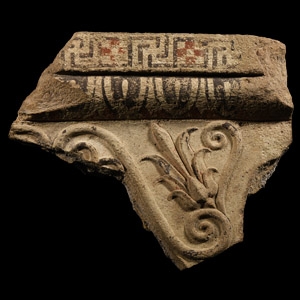
.jpg)


.jpg)
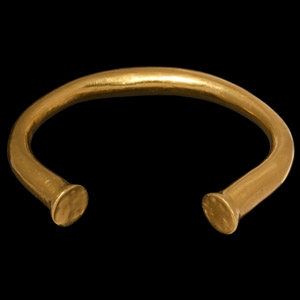
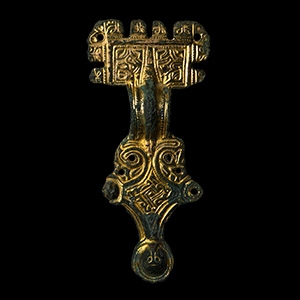

.jpg)
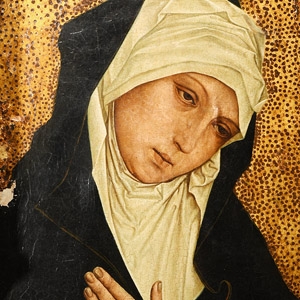

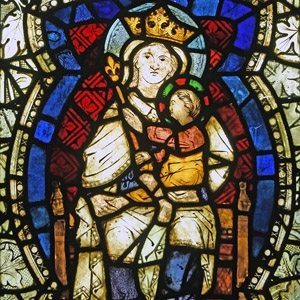
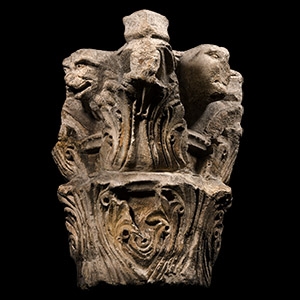
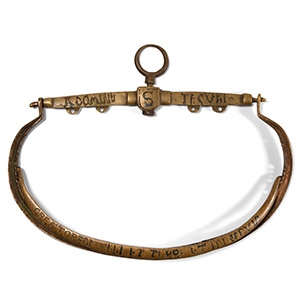
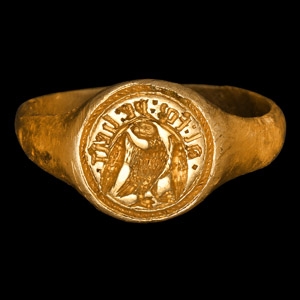
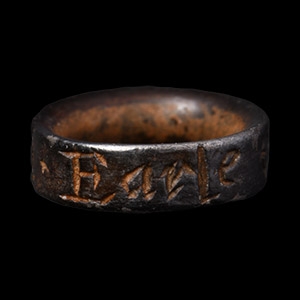
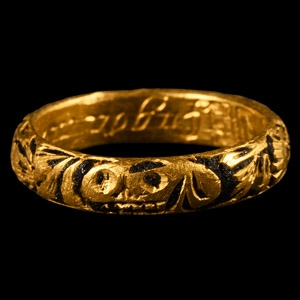
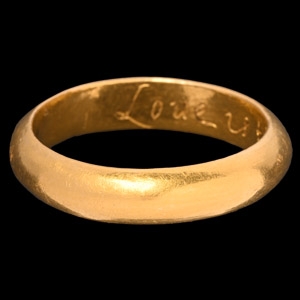
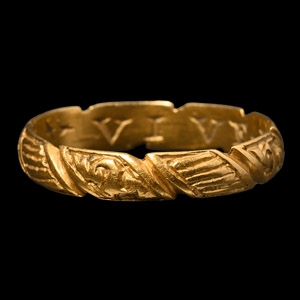
![English Milled Coins - George VI - 1937 - Cased RM Proof Coronation Gold Set [4] English Milled Coins - George VI - 1937 - Cased RM Proof Coronation Gold Set [4]](https://timelineauctions.com/upload/images/items/small/203351-s(2).jpg)

